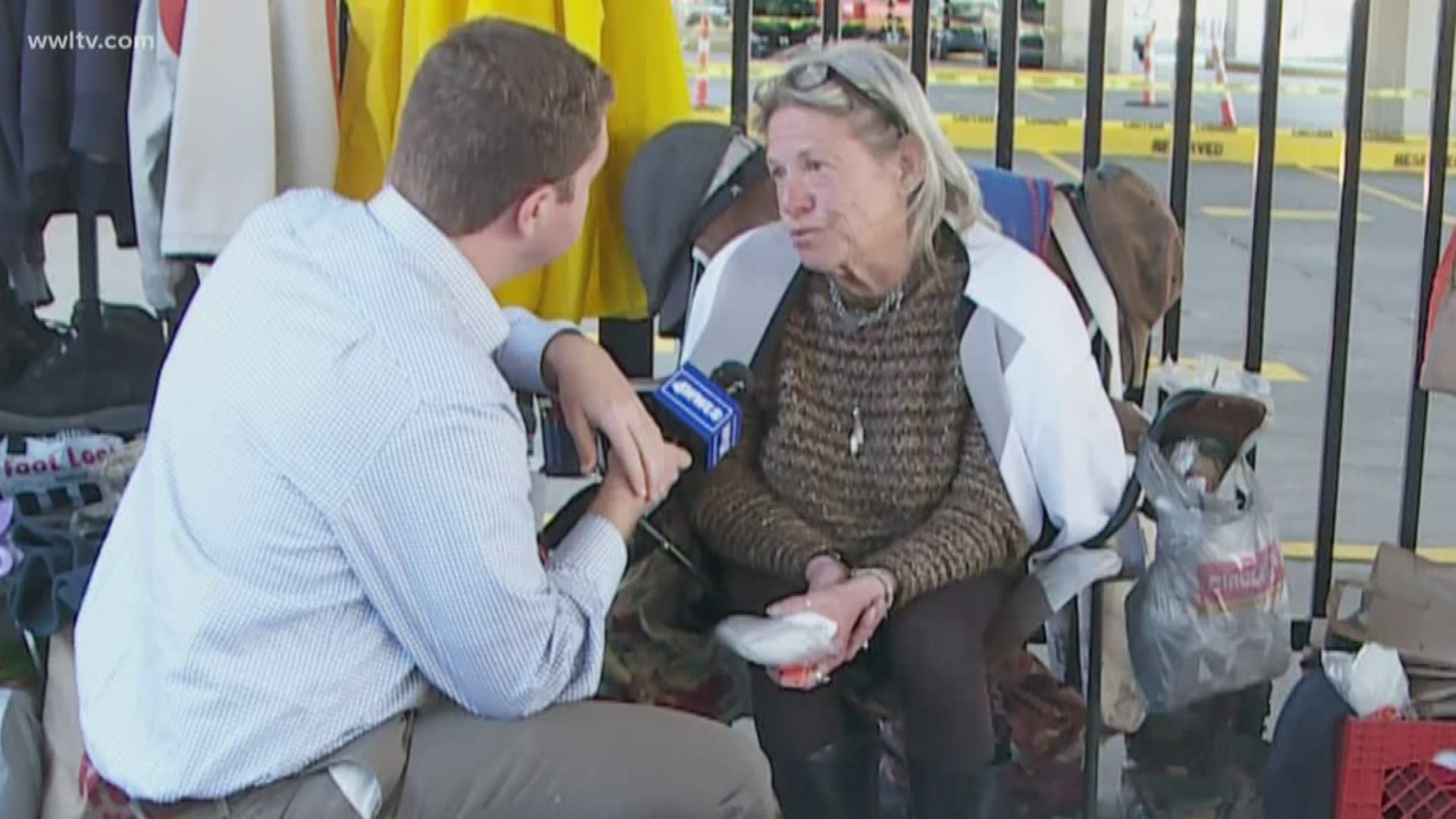NEW ORLEANS — Eugenie wakes up every morning to the sights of the city.
She can see the Superdome, skyscrapers in the Central Business District and is a short walk from the French Quarter.
She’s in New Orleans, but she might as well be in another city.
Home these days is a spot under the Pontchartrain Expressway. It’s a place where those who are down on their luck find a place of their own -- those like Eugenie, who declined to give her last name.
She spent nearly 40 years helping the homeless. Now she lives among them.
Asked if she has family with whom she might stay, the former social worker said no.
“I have people out there who I thought were my family, and at this point in time, I have to say no, I don’t.”
On Tuesday, just blocks away from where Eugenie has lived for the last few months, the City Council’s new Quality of Life Committee met for the first time.
On its agenda: Homelessness.
A proposed ordinance by Joe Giarrusso and Helena Moreno would make it easier for city officials to identify threats to public safety and health -- for both those who live in and near the encampments -- and help to track how the city manages the homeless population.
“We literally have people dying in these encampments,” Council Vice President Helena Moreno said, referring to a recent killing in another homeless encampment at Canal Street and Claiborne Avenue.
In addition to trying to keep the city’s homeless population safe from disease and crime, the council said it wants to protect them from becoming victims of sweeps the city conducts to try to keep the areas clean.
If passed, the ordinance would add new requirements to let those living in an encampment know that a sweep is nearing.
“A homeless person’s belongings cannot just picked up and pitched. You have to honor and respect the fact these are their belongings,” said City Council Research Director Theresa Becher.
The number of homeless people in the city dropped by 85 percent since 2011. There are now a little fewer than 1,200 people who have no place to live.
And those are often the most at-risk -- and the hardest to help, said Jennifer Avegno, director of the city’s Health Department.
“What we are seeing now is that what we are left with are chronic entrenched homeless individuals who for years have had either substance abuse issues, mental health issues,” she said.
But for all the progress in reducing the number of homeless in the city, there was a warning from those who have been working to combat the problem because of rising housing costs.
“As quickly as our teams are housing people, we are seeing more people coming on the street and it’s mainly new homelessness that we’re concerned about,” said Martha Kegel, executive director of UNITY of Greater New Orleans, a homelessness advocacy group.
Back at the underpass, people like Sidney Ratcliff say life on the streets is not something anyone should have to live with. And some days, he said, there is no hope.
“I would really love just to close my eyes and go to sleep and not wake up again,” Ratcliff said. “I would love that.”

